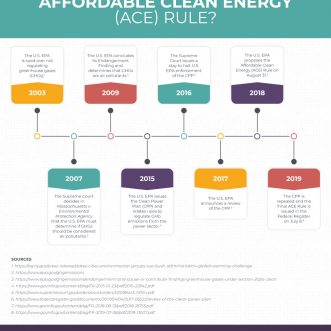As discussed in an earlier posting, Greenhouse Gas (GHG) reporting will be required for 24 source categories (in some cases dependent on emission levels) and facilities with stationary fuel combustion sources that meet specific criteria. Subpart C deals with the specific reporting, recordkeeping and verification requirements for GHG emissions from fuel combustion.
Starting in 2010, GHG emissions reporting will be required of facilities that have stationary fuel combustion sources where:
- The aggregate maximum rated heat input capacity of all units at facility exceeds 30 MMBtu/hr, and
- The facility has GHG emissions exceeding 25,000 metric tons (mt)/year
The regulations define a fuel combustion source as any device that combusts any of 55 solid, liquid or gaseous fuels and includes boilers, stationary internal combustion engines, process heaters, combustion turbines, incinerators, and various other types of equipment. The requirement addresses industrial, commercial and institutional (but not residential) uses of fuel in any combustion device with exemptions for the following:
- Portable equipment;
- Emergency generators/equipment;
- Irrigation pumps at agricultural operations;
- Flares, unless otherwise required by another subpart;
- Electricity generating units subject to Subpart D; and
- Hazardous waste combustion (unless a continuous emission monitoring system (CEMS) is used to monitor CO2 or the unit co-fires fossil fuels)
The fuel consumed as well as the annual operating hours will dictate whether reporting is required. The regulation provides equations for the calculation of GHG emissions based on the type of fuel, the default high heating value (HHV) of the fuel, and fuel-specific emission factors (EF). There are 4 “Tiers” of calculations based on the type of information available as summarized below:
- Tier 1 – use annual fuel consumption (from company records), fuel-specific HHV, and default CO2 emission factors;
- Tier 2 – use annual fuel consumption (from company records), measured fuel-specific HHV, and default CO2 emission factors;
- Tier 3 – use annual fuel consumption from company records (for solid fuels) or directly measured fuel consumption values (for liquid and gaseous fuels) and periodic fuel carbon content measurements; and
- Tier 4 – use CEMS data. There are a variety of restrictions on the use of the Tier 4 methodology. The rule should be consulted prior to using this method.
As an example, GHG emissions reporting will not be triggered unless fuel consumption exceeds the following:
| When Do You Need to Report? | ||
| Fuel | Design Capacity(MMBtu/hr) | Maximum Annual Fuel Use1 |
| Coal | 30 | > 10,800 short tons |
| Fuel Oil | 35 | >2.3 million gallons |
| Natural Gas | 50 | >460 million ft3 (460,000 Therm) |
| Biogas (recovered methane) | 50 | >570 million ft3 |
| Wood | 30 | > 10,600 short tons |
| Ethanol | 40 | > 4.3 million gallons |
1Approximate values assuming full utilization; 8,760 hours/year; and Tier 1 calculation
Regardless of the design capacity, emissions will remain below 25,000 mt/yr if the fuel consumption is below the maximum levels specified above. Similar calculations can be made for other fuel types based on the HHV and EF provided in Table C-1 of Subpart C.
Facilities with combustion units that are exempt from state air quality permitting requirements (e.g., in many states, those individually rated at less than 10 MMBtu/hr are exempt from permitting) will be subject to all of the GHG reporting and documentation requirements. For some facilities that had been tracking and reporting their GHG emissions on a voluntary basis (or due to state requirements), the new regulation may result in an increase in calculated GHG emissions due to the inclusion of GHG emissions from smaller (exempt) combustion units and/or changes in calculation methodology.
CEC recommends that facilities inventory all fuel combustion sources to evaluate whether this Subpart applies or if the facility is exempt from reporting. If you are unclear about how this rule affects your facility, please contact one of CEC’s GHG experts: Kris Macoskey, 800-365-2324, kmacoskey@cecinc.com. You may also email CEC’s GHG team for additional information at GHGENVHelp@cecinc.com.



Post a Comment